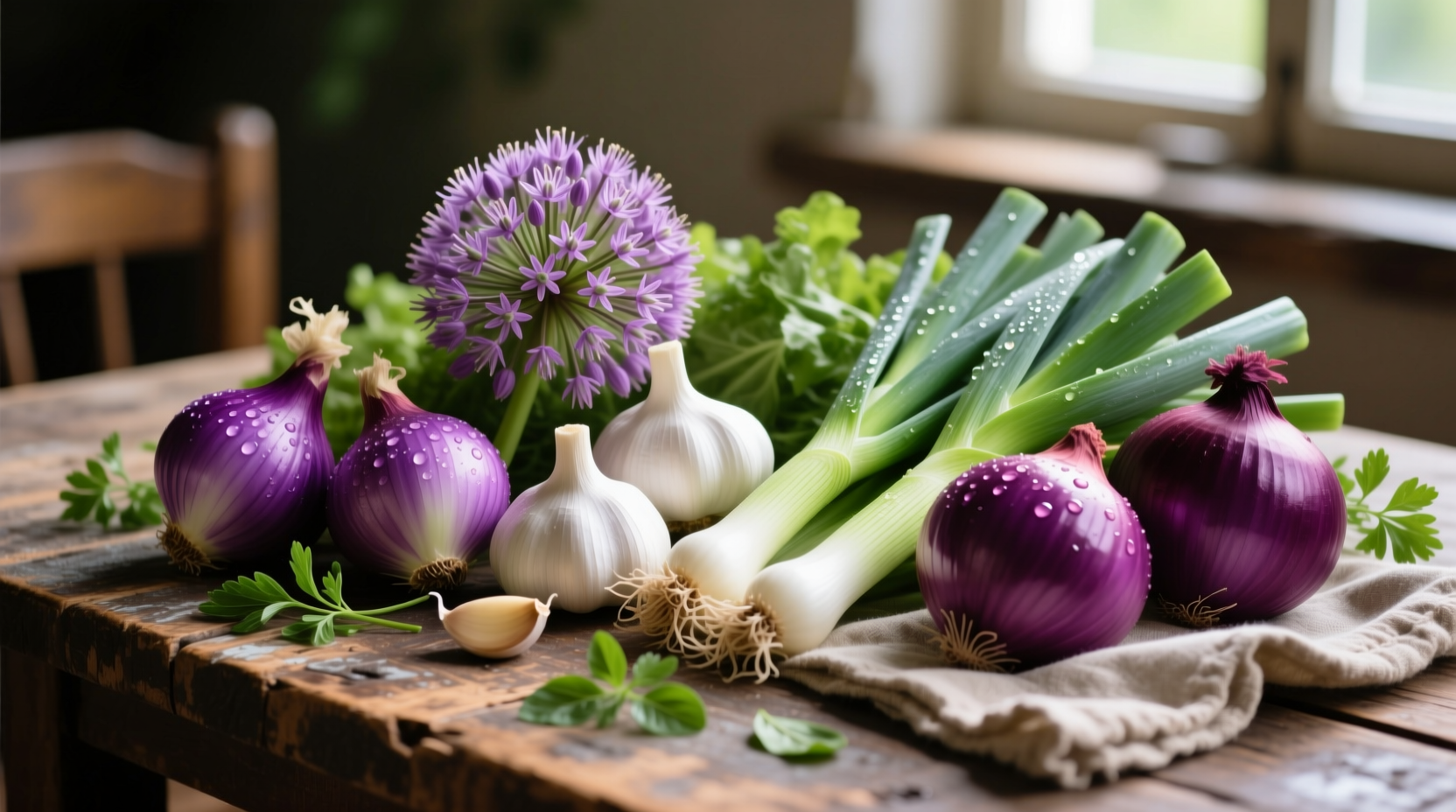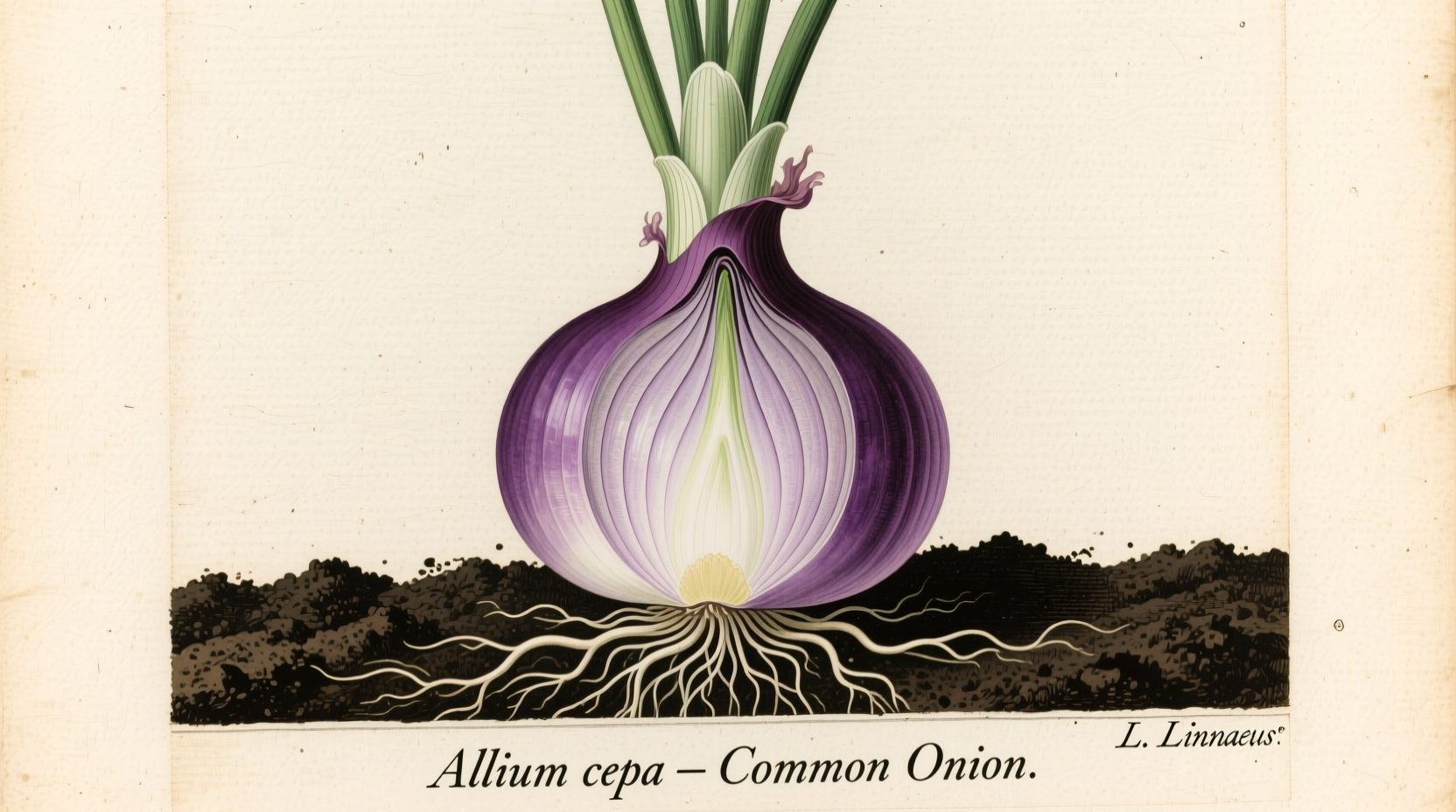Allium onion refers to members of the Allium genus, which includes onions, garlic, leeks, shallots, and chives. These plants share distinctive sulfur compounds that create their characteristic flavors and aromas, with onions (Allium cepa) being the most widely cultivated species for culinary use worldwide.
Understanding the Allium Family: More Than Just Onions
When you reach for an onion in your kitchen, you're handling one member of the diverse Allium genus—a botanical family with over 850 species. These plants share a common chemical foundation: sulfur-containing compounds that create their signature pungency and health benefits. Understanding this family helps home cooks and gardeners make better choices for both flavor and nutrition.

From Garden to Kitchen: Your Allium Onion Journey
Discovering Allium Varieties
The Allium genus encompasses both common and specialty varieties that often confuse home cooks. While "onion" typically refers to Allium cepa (the bulb onion), the family includes numerous edible species with distinct characteristics. These plants evolved primarily in Central Asia, with cultivation spreading globally through ancient trade routes.
| Allium Type | Scientific Name | Flavor Profile | Best Culinary Uses |
|---|---|---|---|
| Yellow Onion | Allium cepa | Strong, pungent when raw; sweet when cooked | Base for soups, stews, caramelizing |
| Shallot | Allium cepa var. aggregatum | Milder, sweeter, more complex than onions | Vinaigrettes, delicate sauces, raw applications |
| Leek | Allium ampeloprasum | Subtle, sweet, grassy flavor | Stocks, soups, gratins, gentle cooking |
| Chive | Allium schoenoprasum | Delicate onion flavor, fresh aroma | Garnishes, egg dishes, potato toppings |
Understanding Flavor Chemistry
Allium vegetables contain flavor precursors called S-alk(en)yl-L-cysteine sulfoxides. When cells are damaged through cutting or crushing, the enzyme alliinase converts these compounds into volatile thiosulfinates—the source of their distinctive aromas and flavors. This explains why:
- Chilling onions before cutting reduces enzyme activity and minimizes tears
- Letting chopped garlic sit for 10 minutes before cooking maximizes allicin formation
- Different allium varieties create unique flavor compounds when cooked
According to research from the USDA Agricultural Research Service, the specific ratio of these compounds varies significantly between allium species, creating their distinctive flavor profiles. This biochemical understanding helps explain why substituting one allium for another can dramatically change a dish's character.
Practical Cooking Applications
Professional chefs leverage allium chemistry to maximize flavor in everyday cooking. Here's how to apply this knowledge:
Raw Applications
For salads and fresh salsas, milder alliums like shallots or scallions work best. Soaking sliced onions in ice water for 10 minutes reduces pungency by leaching out some sulfur compounds. The Journal of Food Science confirms this technique reduces pyruvic acid concentration by up to 27%, creating a more balanced raw flavor.
Cooking Techniques
Different cooking methods transform allium flavors in specific ways:
- Sautéing: Medium heat (300-350°F) develops sweetness through Maillard reactions
- Caramelizing: Low heat (250-300°F) over 30-45 minutes creates complex sugars
- Roasting: High heat (400°F+) concentrates flavors and creates savory depth
When building flavor foundations, remember that garlic burns easily (at 392°F), while onions tolerate higher temperatures. Always cook onions first, then add garlic toward the end of the process.
Growing Your Own Allium Onions
Home gardeners can successfully grow multiple allium varieties with proper timing:
- Onions: Plant sets in early spring or fall depending on variety (short-day vs. long-day)
- Garlic: Plant cloves in autumn for harvest the following summer
- Shallots: Plant in early spring for late summer harvest
- Chives: Perennial that grows well in containers with regular harvesting
The University of California Cooperative Extension notes that alliums prefer well-drained soil with pH between 6.0-7.5. Rotate planting locations annually to prevent soil-borne diseases, and avoid planting near legumes which can stunt allium growth.
Nutritional Powerhouses
Allium vegetables offer impressive health benefits backed by scientific research. A comprehensive review published in the Nutrients journal highlights that regular consumption of allium vegetables correlates with:
- Reduced risk of cardiovascular disease through antiplatelet and cholesterol-lowering effects
- Potential cancer-protective properties, particularly for gastrointestinal cancers
- Antimicrobial activity against various pathogens
- Anti-inflammatory effects that may help manage chronic conditions
The key compounds responsible—organosulfur compounds like allicin and quercetin—are most potent when alliums are consumed raw or lightly cooked. For maximum benefit, chop garlic and let it sit for 10 minutes before cooking to activate alliinase enzymes.
Common Challenges and Solutions
Working with alliums presents several common challenges that home cooks face:
Storage Issues
Proper storage dramatically extends shelf life. The USDA recommends:
- Store dry bulb onions in cool, dark, well-ventilated spaces (55-60°F)
- Refrigerate cut onions in airtight containers for up to 7 days
- Freeze chopped onions for up to 6 months (blanching not required)
- Keep garlic at room temperature in mesh bags for optimal shelf life
Flavor Balance
When allium flavors overpower a dish, try these professional techniques:
- Add acidity (lemon juice or vinegar) to balance pungency
- Include sweet elements (carrots, sweet potatoes) to counter sharpness
- Dilute with additional ingredients rather than removing alliums
- For overly strong garlic, add raw potato chunks while cooking to absorb excess flavor











 浙公网安备
33010002000092号
浙公网安备
33010002000092号 浙B2-20120091-4
浙B2-20120091-4